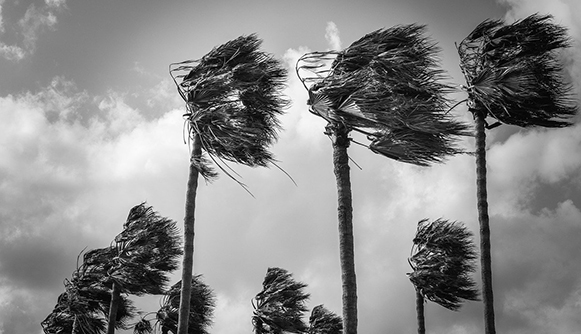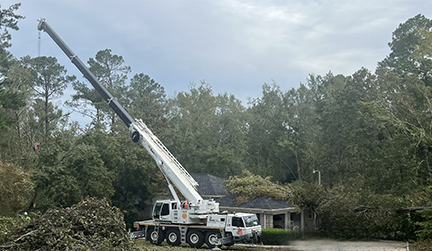
Working in Florida, high wind conditions rarely show up alone. They are usually accompanied by rain and often lightning. There are many things to take into account while making decisions regarding a lift in these conditions. In October, when Hurricane Sandy hit New York City, a crane collapsed under high winds and was hanging dangerously 1,000 feet over the streets below. The collapse occurred even before the full brunt of the storm hit.
When working in windy conditions, consider the sail effect on the load to determine if taglines are adequate to maintain control of the load, and be conscious of conditions such as the wind tunnel effect of nearby structures which may amplify wind gusts, creating a hazardous situation. Operating close to capacity in high wind conditions may induce stresses on the crane structure that surpass the structural integrity of the equipment, causing an overloading situation. Refer to footnotes in the crane load chart for acceptable wind tolerances, especially when making a critical lift. Reliance exclusively upon taglines for excessively heavy loads may also present a danger controlling the load.
The crane operator should communicate adverse weather conditions to the lift director and site supervisor and consult load charts for manufacturer parameters. The lift director and site supervisor should monitor weather conditions for heavy rain, wind or lightning in the area, and shut down lifting operations until conditions improve. Monitoring weather conditions, proper planning and good communication between crew members always makes for a safe lift!
